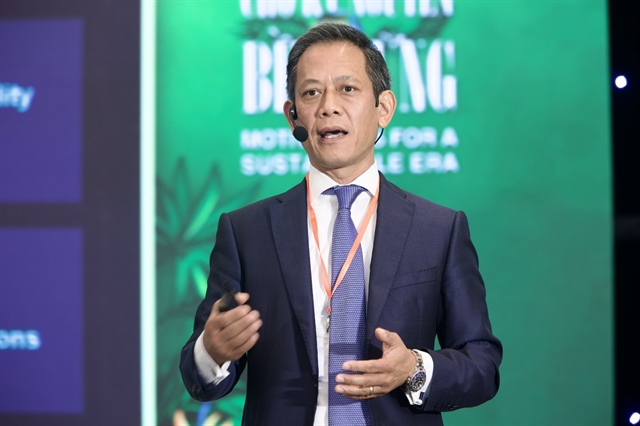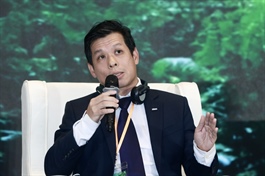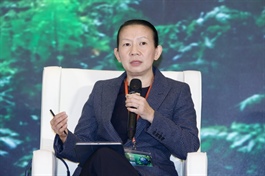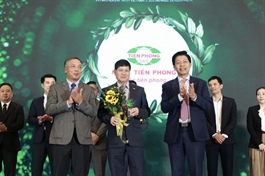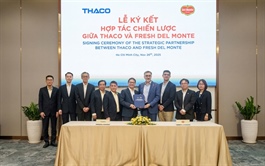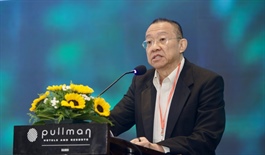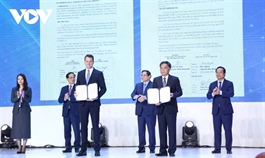Siemens leads technology transformation towards sustainability in Vietnam
Siemens leads technology transformation towards sustainability in Vietnam
Siemens is harnessing advanced digital technologies and AI to drive global sustainability, enhancing efficiency, reducing emissions, and supporting Vietnam's transition towards a smarter, cleaner future.
|
At the Sustainable Development 2025 Conference by VIR on November 27, Thai-Lai Pham, president & CEO of Siemens ASEAN and Vietnam, delivered a keynote speech, underscoring how technology and digitalisation have promoted sustainable development globally, and the opportunities in Vietnam.
With a history of nearly 180 years, Siemens has operated across many fields from electrification, automation to digitalisation. In general, Siemens can participate in almost any industrial sector with the goal to provide technology for everyone.
"Having operated across many industries for many years, we understand our customers' needs very well. We combine the real and the digital worlds to empower our customers to become more competitive, resilient, and sustainable. For the first time, Siemens now enables customers to avoid more emissions than caused along our entire value chain. The technologies we provide to the market currently help reduce up to 150 million tonnes of carbon emissions," Pham said.
Pham further noted, "We believe AI is one of the defining technologies of the century. In the last century, electricity was viewed as a transformative technology. Before electrification, almost everything was done manually, and once electrification arrived, it changed the game entirely. In this century, we believe digitalisation will have a similar impact. AI, especially in digital and software applications, plays a transformative role in manufacturing and smart infrastructure, from buildings and networks to mobility and public transport, helping ease transport challenges and cut carbon emissions."
In addition, buildings are among the major contributors to global carbon emissions. In this regard, Siemens offers the Building X platform, which enables the creation of a digital twin of a building. With a digital twin, operators can simulate and visualise different scenarios of how the building operates. This allows operators to control energy consumption and gain full visibility of building performance to make more informed adjustments. The platform integrates core infrastructure layers such as air conditioning, cooling systems, and all common systems. It works much like having a smartphone in the Apple iOS or Samsung Android ecosystem, upon which various applications can be built for analysis, which results in significant energy savings.
In Vietnam, Siemens has actively explored how new energy sources can be adopted. We have participated in many wind and solar power projects. These are critical initiatives to help build a power grid capable of managing and integrating variability from diverse sources. For example, wind power is not always predictable, and solar power also fluctuates. Therefore, a management system is needed to balance supply and demand between peak and off-peak times. This is the tool that allows us to coordinate and optimise the grid, he said.
Another major topic when discussing AI is the need for data centres. Asia still faces a shortage of data centres, yet they are growing rapidly. However, data centres consume massive amounts of energy. This is additional electricity demand beyond traditional industrial needs. Every country faces challenges with developing data centres quickly while addressing their enormous energy requirements. Therefore, it is crucial to design data centres that use energy more efficiently to reduce the burden on power generation and lower carbon emissions.
"Using digital twin and simulation technologies, we can model real-time conditions as a data centre is powered," Pham said. "By creating a digital twin, we can generate a thermal map to identify areas with high heat loads. Not every zone needs cooling. Ssome are not very hot, while others require intense cooling to protect expensive chips from overheating and burning out. Through simulation, we can track heat movement, pinpoint critical hotspots, and cool only where necessary."
Siemens is on the right track to achieve the net-zero goal by 2030. The company is making strong progress in delivering its technology across this field.
"In summary, sustainability remains a key concern; it has not disappeared. But more efforts are needed because climate change will significantly impact this region. This is a challenge we cannot ignore or underestimate. At Siemens, we view this as a core priority. We believe technology, especially digital technology, is one of the key enablers of sustainable transformation," Pham stated.
- 12:29 27/11/2025


